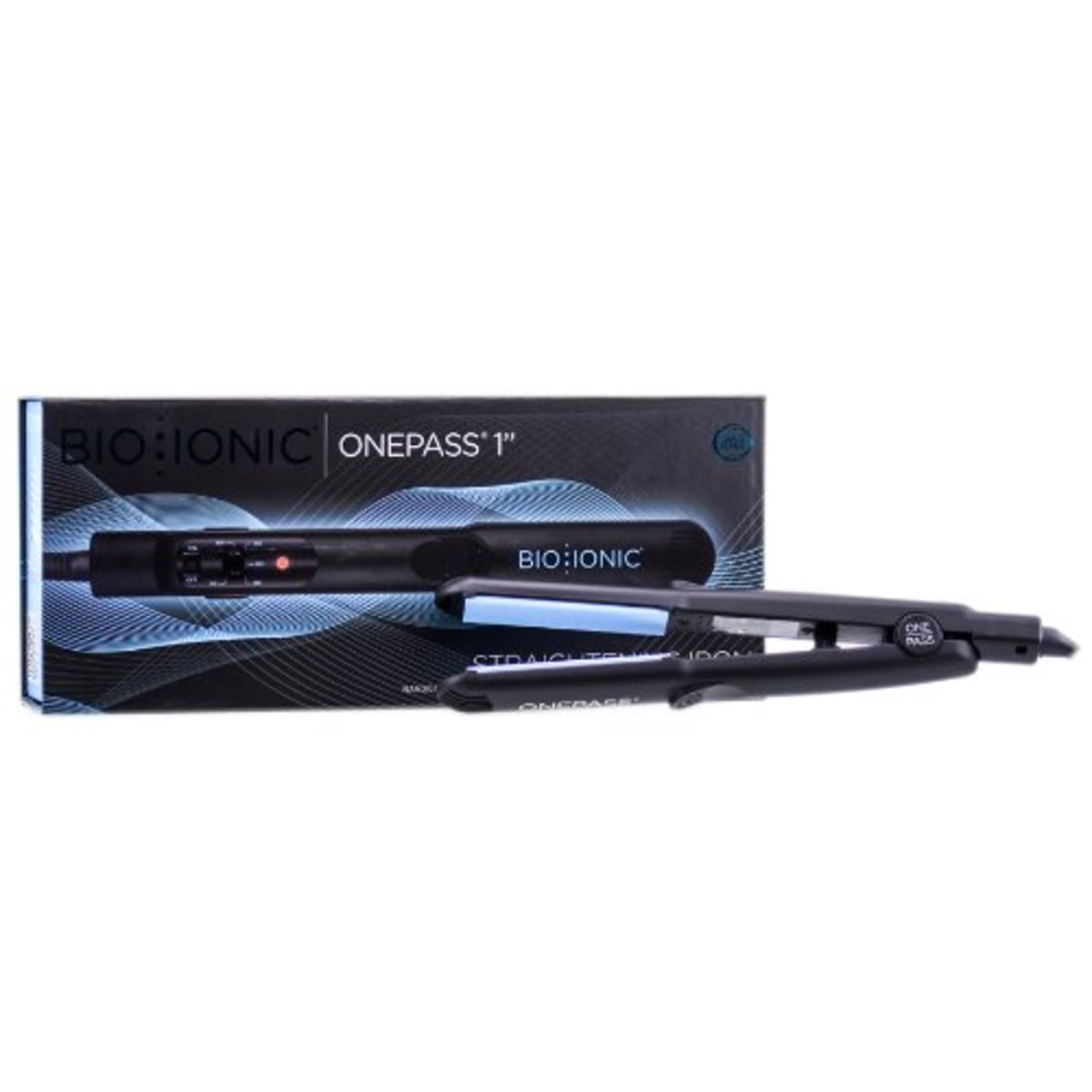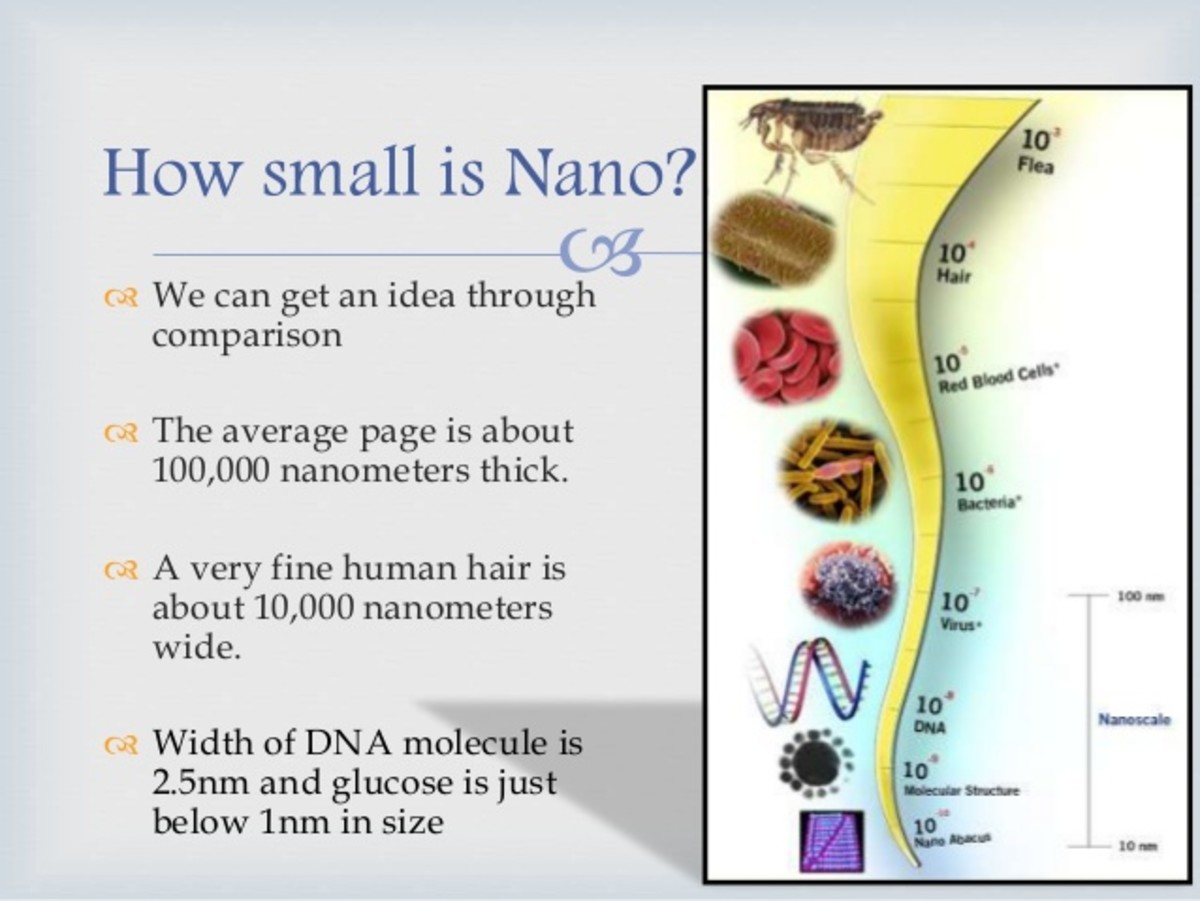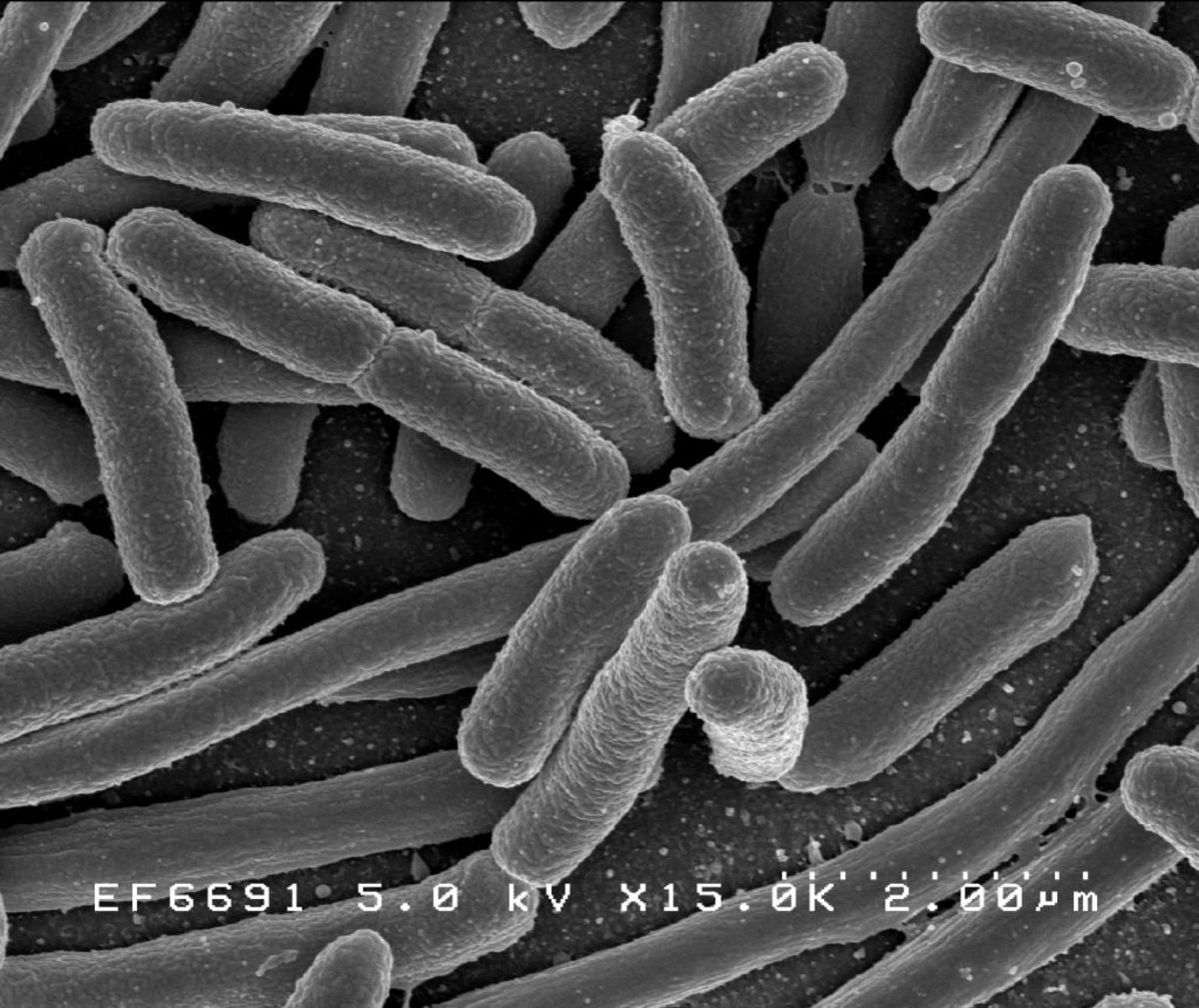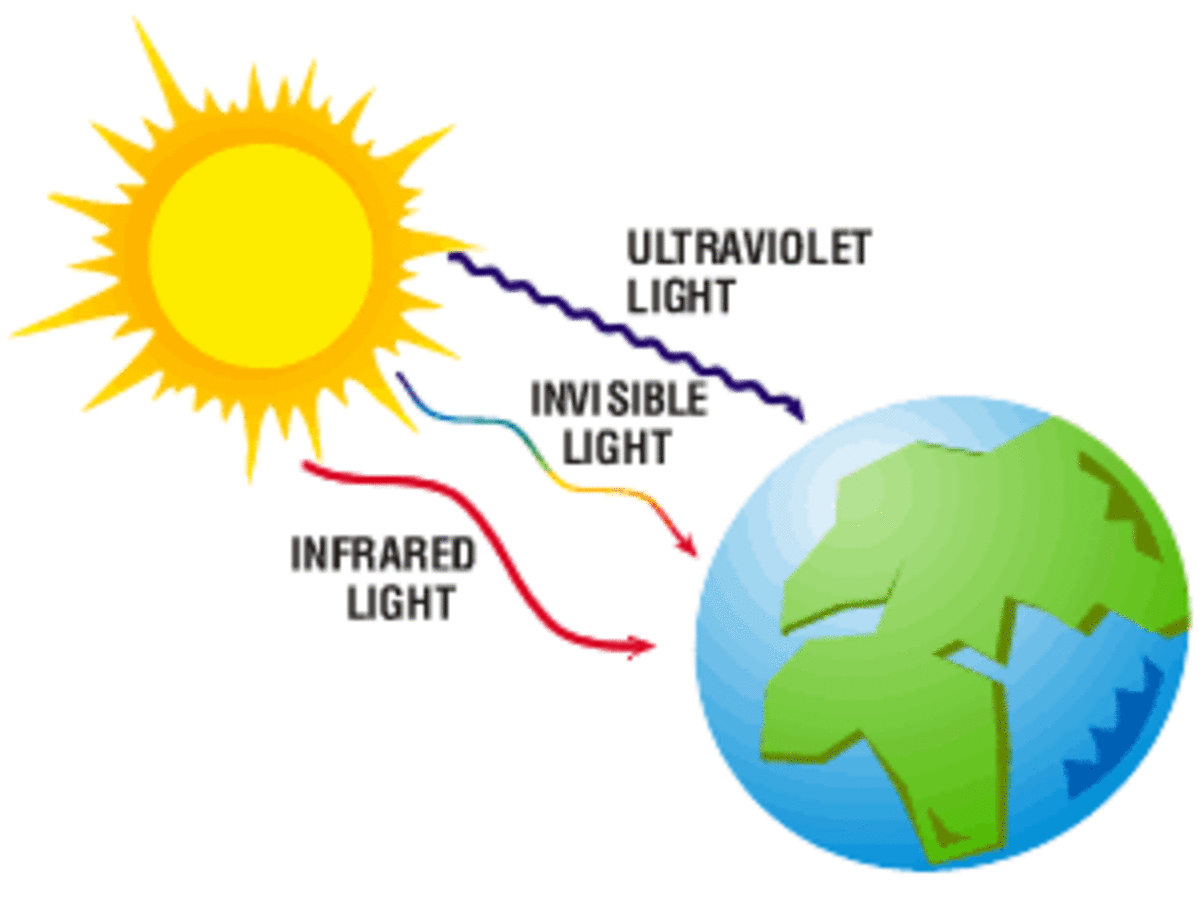Advances in Nanotechnology and Uses of Nanoparticles

Copyright 2012 - Kris Heeter, Ph.D.
During the last decade, you might have heard any number of new words popping up using the prefix “nano-“. Most of these new words belong to the relatively new science of nanotechnology.
This is one of the fastest growing fields of research. The world of nanotechnology and the use of nanoparticles has quickly become a part of our every day lives - whether we realize it or not!
For those not familiar with this new field of technology, here’s a brief overview and some new nano words worth learning the definition of.
Nano Trivia
The prefix nano- is derived from the Greek word νᾶνος, meaning "dwarf".
What is the Definition of Nano?
The prefix “nano-“ officially became used as a standard of measurement around 1960. It refers to anything that is “one billionth” or otherwise noted as a factor of 10−9 or 0.000000001
The word nano is part of the metric system. Some of the more common references using this prefix over the last several decades include:
- Nanometer (alternative spelling nanometre) - defined as one billionth of a meter
- Nanoliter (alternative nanolitre) - defined as one billionth of a liter
- Nanosecond - defined as one billionth of a second
These components so small that they are hard to imagine or visualize! But, they are measurable. Over the last decade, understanding and applying measurements this small have been the foundation for something now commonly referred to as Nanoscience or Nanotechnology.
How Nanotechnology Works
The Growing Field of Nanotechnology
Nanotechnology or “nanotech” refers to the micromanipulation of matter. The matter can be simple molecules and elements like silver, gold, titanium, etc., or it can be living matter that is manipulated for medical and technological advances.
Nanotechnology is now being used to create new materials and devices for personal care products, pesticides, electronics, medicine and much more.
Nanotech products are everywhere although you will hardly ever see them listed as an ingredient or component.
Common Nanomaterials and Engineered Nanoparticles
Some examples of nanoparticles include:
- Nanocarbon
- Nanosilver
- Nanogold
- Nanotitanium
- Nanoplatinum
- Nanocopper
These engineered nanoparticles (ENPs) are now being used in everyday household and personal products, including cosmetics.
For example, nanosilver is used is many brands of socks as an anti-fungal agent. Nanotitanitum, a form of titanium dioxide, is used to increase the whiteness of products like paints, paper and plastics. It is also used in some cosmetics and suncreens.
NanoMedicine – the latest in medical technology
NanoMedicine is one of the hottest growing technologies in the medical industry. It includes everything from nanosurgery to nanobots.
Be prepared to walk into a whole new medical world over the next few decades. I guarantee that you will be hearing many of the following terms more often:
Nanosurgery refers to the use of tiny microscopic needles or femtosecond lasers (a laser with ultra-short pulses) to perform surgery on individual cells and was designed for advances in gene therapy and cancer treatment.
Nanoknife refers to a new laparoscopic cancer treatment procedure. It’s being used to ablate or kill hard to reach cancer tumors and ones that can’t be easily removed surgically (e.g., tumors in the liver and pancreas).
Nanobots or nanorobots are two terms being used to refer to small DNA or molecular robots that are also being explored for fighting cancer.
Nanoparticles are also being designed to deliver deliver therapeutic drugs to targeted sites and to help minimize toxic side effects of chemotherapy drugs.
Nanoscale cancer detection has been developed to identify and quantify cancer cells that break off from tumors and circulate through the blood. This new technology may eventually allow doctors to test and identify cancer in earlier stages.
Related Articles of Interest
Engineered Nanoparticles (ENPs) In Food - Are They Dangerous? - ENPs are presently being used in vitamin supplements and are being explored as additives to food and food packaging (to prevent spoilage). Click on the article title to learn more.
DNA Nanobots to Fight Cancer and other Diseases - Tiny DNA robots are being researched and tested as a new cancer treatment. Learn more about how these microscopic robots are being used by clicking on the title above.
Silver Nanoparticles In Household Products Can Have Effects on Human Reproduction- Nano silver particles are now being used in hundreds of consumer products. Up until recently nanosilver has been thought to be completely safe. New research suggests that these particles can have long lasting negative health impacts, including DNA damage and effects on human reproduction.
Nanotech Food and Supplements
Engineered nanoparticles (often referred to as ENPs) are currently being used in a number consumer products including food and supplements.
Unfortunately, the safety of ENPs in food is unknown. The effects of long-term exposure have not been researched.
Nanoparticles are being created to increase the shelf life of food and to make it taste better.
In addition, supplements containing nanoparticles have been on the market – sometimes referred to as "nanoceuticals".
The disclosure of ENPs as an ingredient in food is not required and supplements are not subject to review by the FDA for safety or toxicity. There are growing concerns among some research groups and scientists that nanoparticles in dietary supplements and food may cause health problems.
Living Nanoparticles
Nanobacteria have recently been discovered and are much smaller than what was ever thought possible for life. To put it into perspective, a normal bacterium is about 200 nanometers in size. An nanobacterium would be less than 50 nanometers. Nanobacteria are still somewhat controversial – very little is known about them. However, they have been found to be dwell in humans!
Nanonets have recently been described as antimicrobial peptides (proteins) that form a web- or net-like structure in the human gut that serve to capture invading bacteria.
Other Nanotech Products and Technology
Scientists continue to explore the world of nanoscience. New technologies and new nano words will continue to evolve. And, over the years, many companies have jumped on the marketing bandwagon to create new products that either incorporate nanotechnology or use the word “nano”.
Here is just a small sample of other related nano words popping up:
Nanomate
This term has been used to refer to a “eco-friendly” nano-ceramic coating for metal, plastics, glass and solar panels. It is marketed as anti-corrosive, anti-fingerprint and anti-abrasion.
It is also a term used to refer to the latest in a chip-based nanoelectrospray ionization technology by a company called Advion (a machine called the TriVersa NanoMate that is used for medical and scientific research).
NanoMAG
This is the commercial name given for nano magnesium that is used to create light-weight and high-strength magnesium sheets.
One current application is as a lightweight protective case for iPhones.There are many other applications being explored, including the development of bioabsorbable implants.
(Note: this term is also used to refer to a pickup in music that provides an acoustic sound but has nothing to do with nanotechnology. It is also used to refer to a magnetic aquarium cleaning device that does not appear to be nanotechnology based).
Nanocar
Nanocar is a small molecule designed in 2005 at Rice University. It consists of an H-shaped microscopic 'chassis' made with specific chemical groups attached at the four corners to act as wheels. It is considered the first step in creating molecular machines.
This nanotechnology is evolving and new “nanocars” are being created – e.g, a new molecular machine called the “nanodragster”.
(Note: "Nano Car" is also used to refer to a small automobile created by Tata Motors out of India).

What Does the Future Hold?
This will undoubtedly be a technology field to watch and one to stay informed on. New products and new medical procedures will be evolving.
Feel free to share your thoughts and comments below on some of these new technologies!








